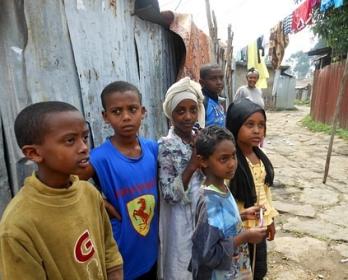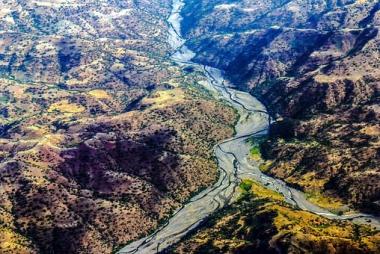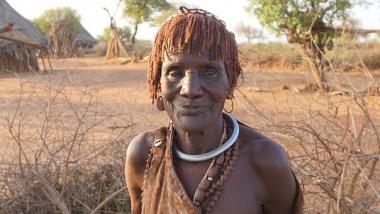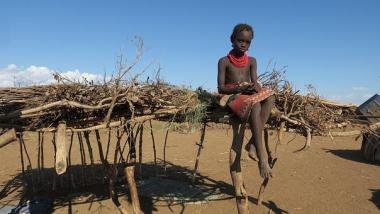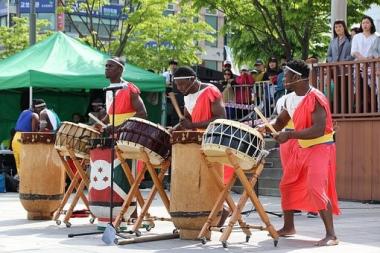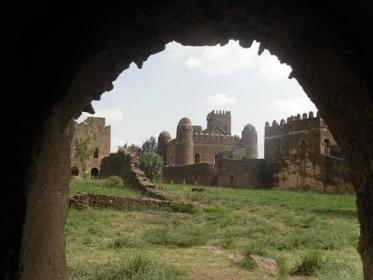ETHIOPIA FOCUSES ON CLOTHING AND TEXTILE EXPORTS
- Industrial parks should enable a quantum leap
- Progress in infrastructure, Deficits in foreign exchange provision
The Ethiopian textile, clothing and leather industry scores not only with comparatively low wages and high-performing personnel, but also with modern industrial parks. In the meantime the technology has to be fully imported and the supply of materials needs to be greatly expanded. There is a great progress in logistics, but unfortunately not in foreign exchange procurement. German suppliers of relevant equipment should definitely consider Ethiopia in their acquisition.
So far, only Mauritius has made a name for itself as a producer of high-quality clothing south of the Sahara. Attempts to locate textile and clothing companies in Namibia and Lesotho in a larger style have not been very successful. Meanwhile Kenya and Ghana have far too expensive production conditions. "Clothing companies are nomadic,” says a consultant, who is specializing in the trade, "they go where it's cheapest for them."
Meanwhile, Ethiopia offers several advantages: Wages and additional costs are far below the Chinese ones. A worker in the Ethiopian factories earns an average of USD 909 a year, according to a survey by the US Center for Global Development, compared to USD 835 in Bangladesh, USD 1,776 in Tanzania, and USD 2,118 in Kenya. Another advantage is appreciated by employees: Ethiopia has a long tradition of textile and clothing production as well as in leather processing and thus at least an expandable base of skilled workers.
The supply of native cotton and leather meanwhile is considered strongly expandable. In times of drought, such as in 2016 and partly in 2017, the supply of cotton is insufficient. However, the government is cooperative and increasingly open to the needs of producers. Thus, the infrastructure has been currently sustainably improved, in particular the transport routes to the seaport Djibouti, from where Europe is much faster to reach than from the Far East. In addition, the Ethiopian capital Addis Ababa has a capable aviation hub with a dozen direct flights to the EU, including Frankfurt and Vienna. There is also a modern air freight center.
Modern industrial parks as a game changer
Just as important as the delivery routes are the "modern" production conditions in the emerging industrial centers all over the country, Made by China: pothole-free roads, guaranteed electricity and water supply, proper waste and wastewater disposal, workers' settlements in the vicinity. From the Ethiopian point of view, a great many jobs are created, families are fed and foreign exchange is earned.
According to its government, Ethiopia is in a transformation process away from an agrarian economy and towards an industrialized state. By 2025, the country should reach a "middle-income status" and become the largest industrial production hub in Africa. To achieve this, Ethiopia is investing heavily in roads, railways and power generation, in health and education, in urban and rural development, and in the creation of industrial clusters.
Ambitious export specifications
In July 2016 the Hawassa Industrial Park was officially opened, dedicated to the export of textiles and clothing, and is the largest industrial park in sub-Saharan Africa. As early as 2018, the park is expected to employ 60,000 workers and generate USD 1 billion in exports of clothing and textiles - a steep target given in a view of the current export figures. As early as 2030, Ethiopia wants to reach a total of USD 30 billion by exporting textiles and clothing - but it's still a long way off. At present, 15 in-ternational companies are already investing in Hawassa, including the US PVH Corporation (formerly Phillips-Van Heusen Corporation, prominent brands: Calvin Klein and Tommy Hilfinger) and Epic Group (Hong Kong), a supplier of, among others, Walmart , JC Penny, Levi Strauss, VF Corporation, Tesco, Sansbury's, Marks & Spencer and C & A. Epic wanted to go to Kenya first, but then decided for Ethiopia at the last minute, which, according to Epic boss Ranjan Mahtani, is "still unpolished," but has the most potential.
The challenges are considered to be high: "Our seam-stresses have never got a job before and have never seen a sewing machine," Mahtani says training therefore is a top priority. At the same time, however, his company also relies on state-of-the-art automatic machines, for example for attaching bags. The production halls are also all around computerized with RFID technology. The current efficiency Mahtani estimates at 25 to 30 percent. After experience with other production sites, results of 75 to 80 percent are possible after about ten years.
Wide range of new industrial parks under construction
In July 2017, another industrial park was opened in Kombolcha City. A whole range of other parks are in various stages of realization and all are focused on the apparel, textile, pharmaceutical and medical device manufacturing sectors. According to the Ethiopian Government, there is no shortage of interested investors from the PR of China, India, Turkey, the US, Hong Kong and South Korea. Ethiopia benefits from the African Growth and Opportunity Act of the United States, which, for example, reduces its import duties by 16.8 per cent on cotton pants and 30 per cent on synthetic shirts. In addition, Ethiopia has a duty-free access to the EU market under the Everything-but-Arms initiative.
| SITC- product group | 2014 | 2015 | 2016 |
|---|---|---|---|
| 61 Leather and leather goods | 97.51 | 98.20 | 78.63 |
| 65 Yarn, fabrics finished textiles and re-lated products | 39.34 | 39.12 | 29.61 |
| 84 Clothing and clothing accessories | 55.53 | 77.94 | 68.25 |
| 85 Shoes | 33.88 | 37.69 | 43.80 |
| Total | 226.26 | 252.95 | 220.29 |
Source: Comtrade, as of 18 October 2017
| Supplying country | 2014 | 2015 | 2016 |
|---|---|---|---|
| Total | 131.30 |
170.51 |
111.10 |
| PR China | 43.87 | 42.40 | 62.07 |
| Italy | 6.38 | 11.75 | 11.72 |
| Japan | 4.40 | 10.11 | 6.89 |
| Turkey | 4.86 | 19.14 | 4.92 |
| other Asian countries, not specified | 1.85 | 1.87 | 4.11 |
| India | 6.07 | 6.49 | 3.06 |
| Germany | 9.22 | 9.08 | 2.44 |
Note: The import figures mentioned above are based on Ethiopian data, which for various reasons are not considered particularly reliable. Equally not reliable are often the relevant export data of the partner countries, because all sea transports go via Djibouti and deliveries statistically are recorded often as exports to Djibouti.
Source: UN Comtrade, as of 18 October 2017
German exports expandable
German exporters of technology for the textile, clothing and leather industries are not yet well positioned in Ethiopia. According to the preliminary figures of the Federal Statistical Office (SITCM 724), in 2016 only EUR 1.06 mio of relevant technology went to Ethiopia, compared to EUR 1.05 mio in the previous year and EUR 5.02 mio in 2015.



